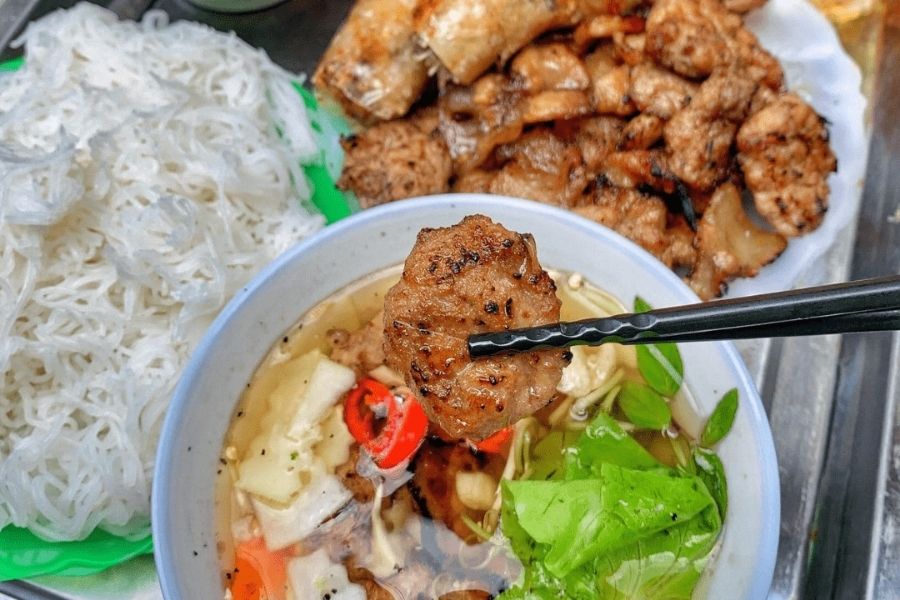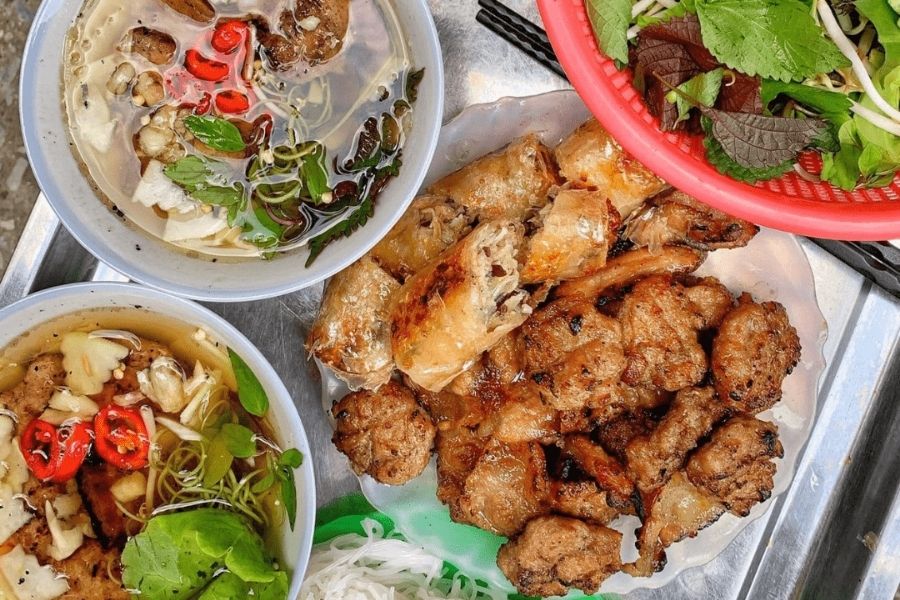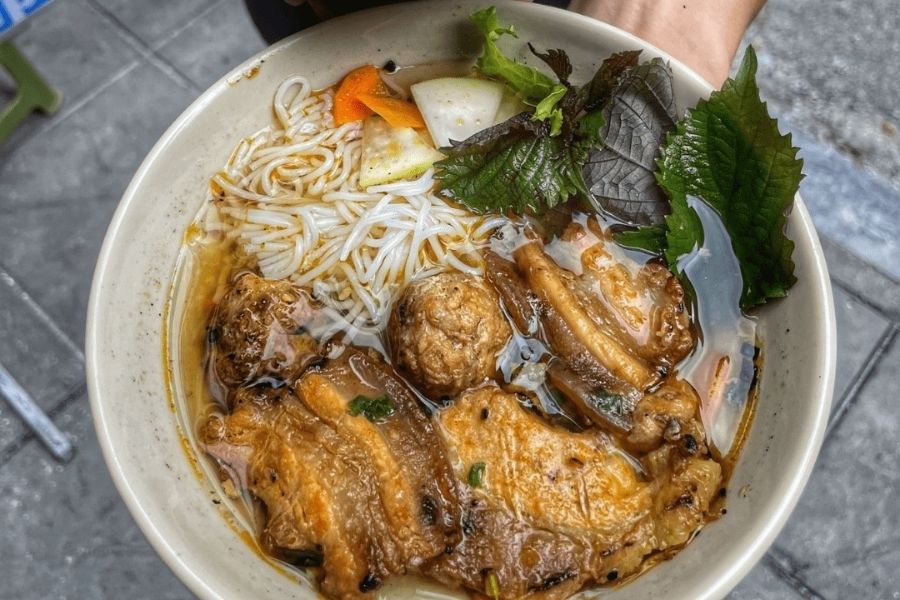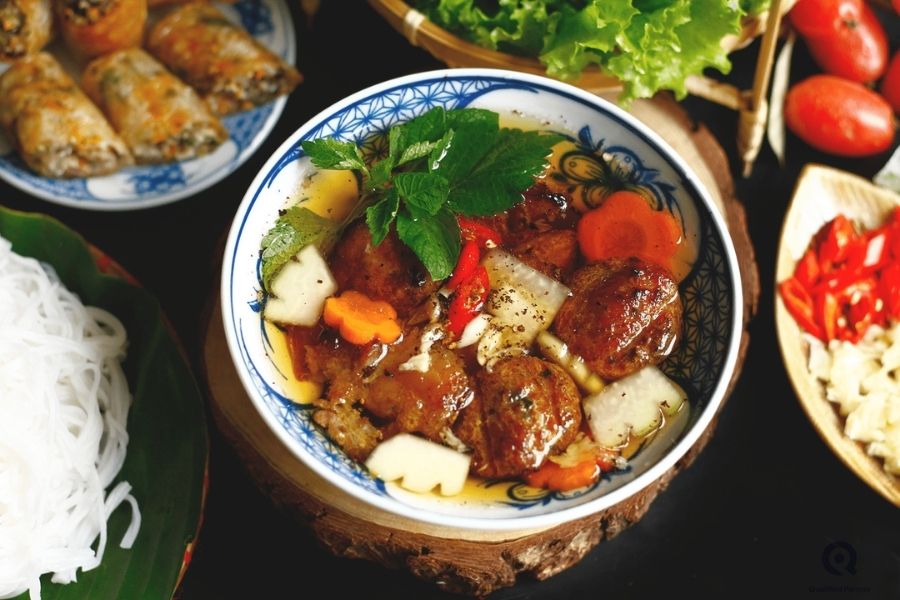When we mention bun cha, we refer to a familiar dish for many, especially those living and working in the capital city. With its distinct characteristics in terms of color, flavor, and preparation, bun cha easily captures the hearts of people. Its familiarity may lead few to realize that bun cha in Hanoi is actually the root of the capital city’s culinary culture.
The Origin and Inherent Value of Bun Cha
There isn’t an exact milestone to record the history of bun cha’s emergence. What is known is that for generations, the people of Hanoi have been familiar with bun cha and consider it an indispensable dish.

Bun cha is not extravagant; it reaches people in a humble way but leaves a deep impression in the subconscious of many. It has a unique flavor that makes anyone who ventures far from home long for it.
It’s no wonder that bun cha has become a beautiful cultural aspect that finds its way into books filled with poetry. Wherever bun cha goes, its fragrant aroma follows. This aroma is also mentioned in Vũ Ngọc Phan’s work, “Those Years”: “Wherever bun cha is sold, the fragrance fills the air. The bun cha vendor fans the charcoal grill, and the smoke billows. For three or five cents, you can enjoy delicious bun cha; making it at home costs more and is more labor-intensive.”
In the book “Hanoi’s Six Streets and Districts,” Thạch Lam also doesn’t forget to describe the irresistible goodness of bun cha:
“…There was a scholar in the countryside, one day he came to Hanoi and spontaneously recited two lines of poetry when he smelled the aroma of grilled pork: A thousand years of precious things in Thang Long. Is this bun cha here, or is it not?…”
Bun Cha: An Exquisite Culinary Delight of the Kinh Ky Region
Bun cha consists of three main components: dipping sauce, grilled pork, and rice vermicelli. Whether a serving of bun cha is delicious or not is largely determined by the dipping sauce. The bun cha dipping sauce is prepared to be both sour, spicy, salty, and sweet, made with fish sauce, vinegar, sugar, garlic, chili, and other ingredients, with the addition of green papaya, carrots, or sometimes even bean sprouts.

The grilled pork comes in two forms: sliced pork belly and pork patties. Typically, sliced pork belly is made from pork belly meat to ensure a certain tenderness and sweetness, while pork patties are molded into round shapes, seasoned, and grilled over a charcoal fire until they turn a reddish hue. Nowadays, rice vermicelli used in bun cha is usually the “bun roi” variety, although traditionally, thinner rice vermicelli, known as “bun con,” were more commonly used.
Although you can enjoy bun cha at any time of the day, people in Hanoi typically have it for lunch. The choice of this mealtime is considered one of the unique aspects of the “culinary art” of the ancient capital city. Sitting on plastic chairs on the sidewalk, picking up a plate of tender white rice vermicelli and dipping it into warm sauce seems to have become a daily routine for the Vietnamese.
The distinctive flavor of Hanoi’s bun cha is unparalleled
The rich taste of grilled meat, carefully marinated with a hint of fragrant charcoal, is served with fresh, crisp vegetables and sweet and tangy dipping sauce. Everything comes together in perfect harmony, making it impossible to forget after just one taste.
To truly savor bun cha, it should be eaten in the right way. People from the capital city often say that enjoying bun cha the proper way involves pairing it with various fresh herbs such as lettuce, aromatic herbs, and perilla leaves. You pick up a piece of vermicelli with your chopsticks, dip it into a plate filled with grilled meat and dipping sauce, add some fresh herbs, and savor the harmonious flavors that come together.

Not only renowned throughout the country, but bun cha has also captivated international travelers. In 2016, the bun cha dinner of U.S. President Barack Obama and chef Anthony Bourdain in Hanoi created an extraordinary “effect.” A prominent political figure and a renowned culinary personality, these two souls met over a dish of Hanoi’s bun cha. The image of the world’s most powerful man sitting on a plastic stool, enjoying bun cha, and sipping cold beer in a simple yet elegant white shirt in Vietnam became one of the most memorable highlights in the hearts of the public for a long time afterward. Even later, both domestic and international newspapers continued to discuss the meal and the simple yet excellent taste of bun cha.
Bun cha has its own unique charm, not overly extravagant but captivating in its simplicity. Despite the ups and downs of history, bun cha has maintained its distinctive flavor and firmly held its position as one of the quintessential dishes in Vietnamese cuisine.
